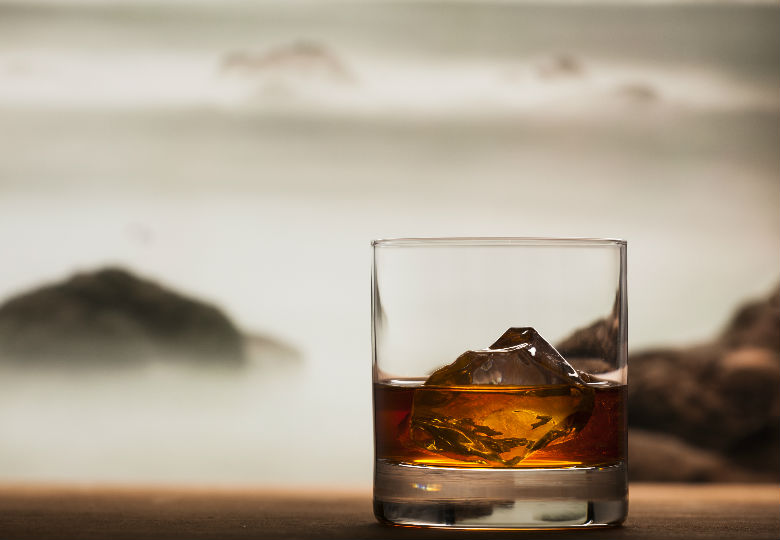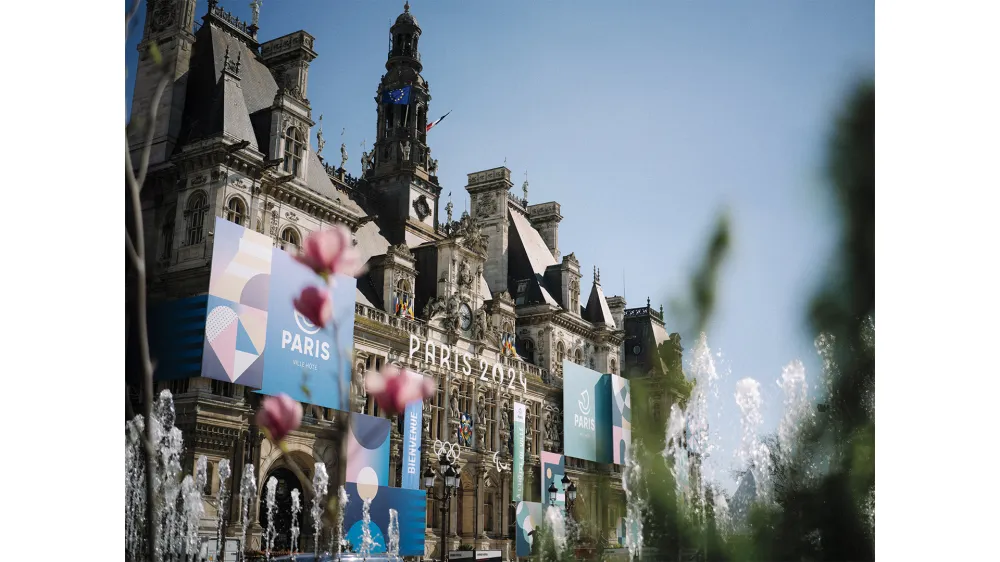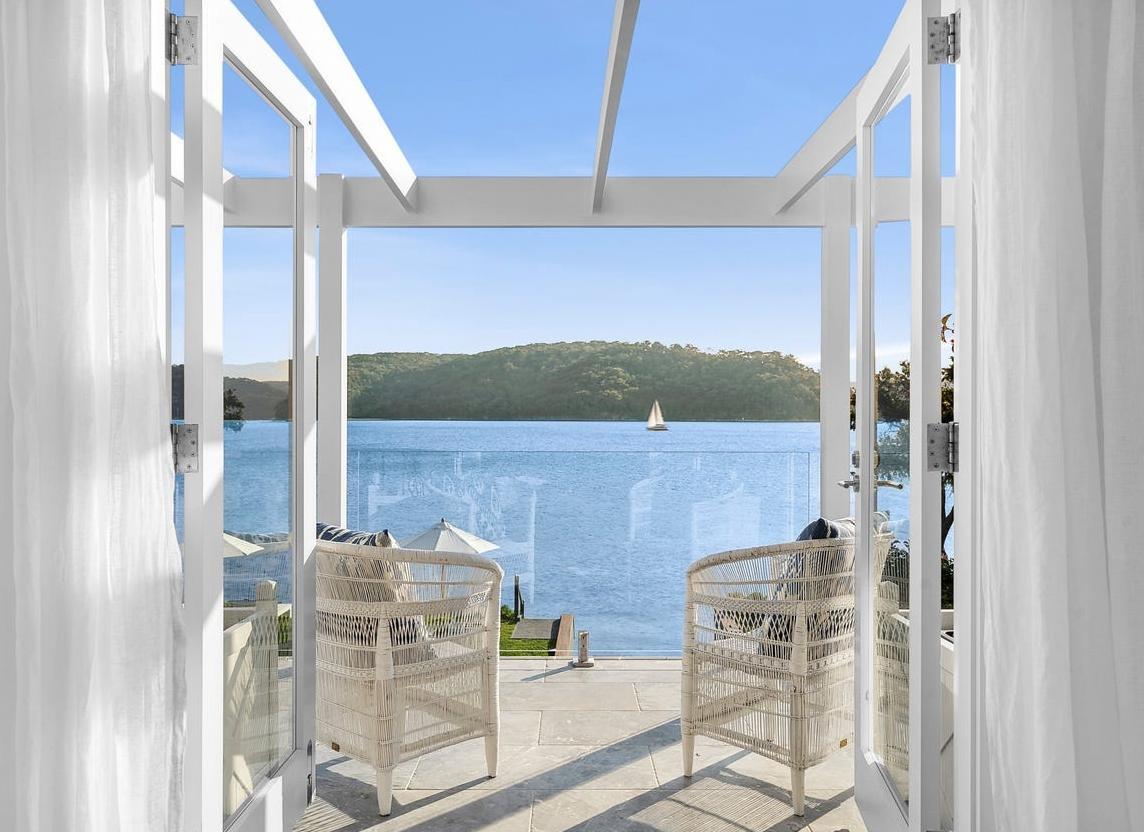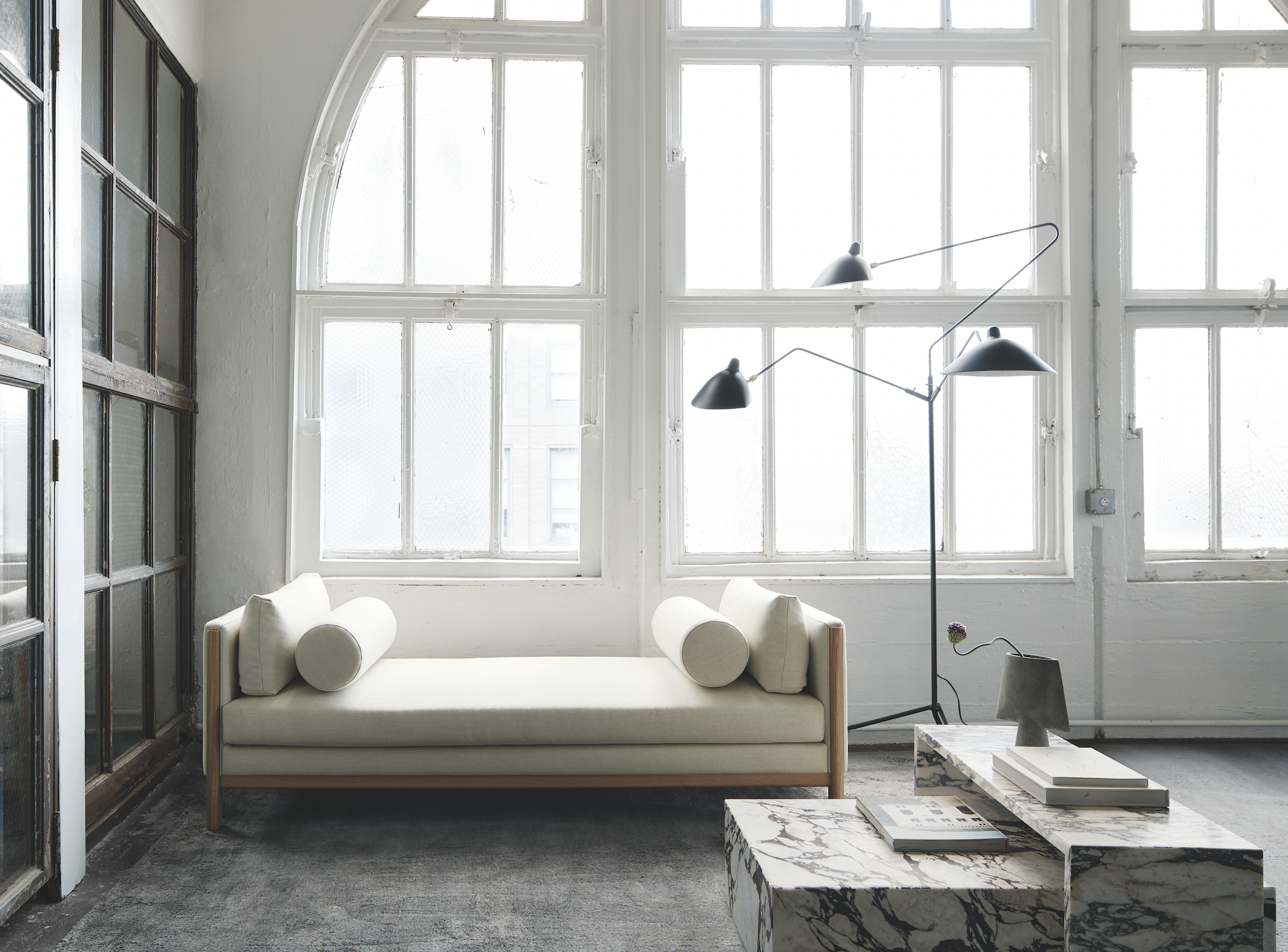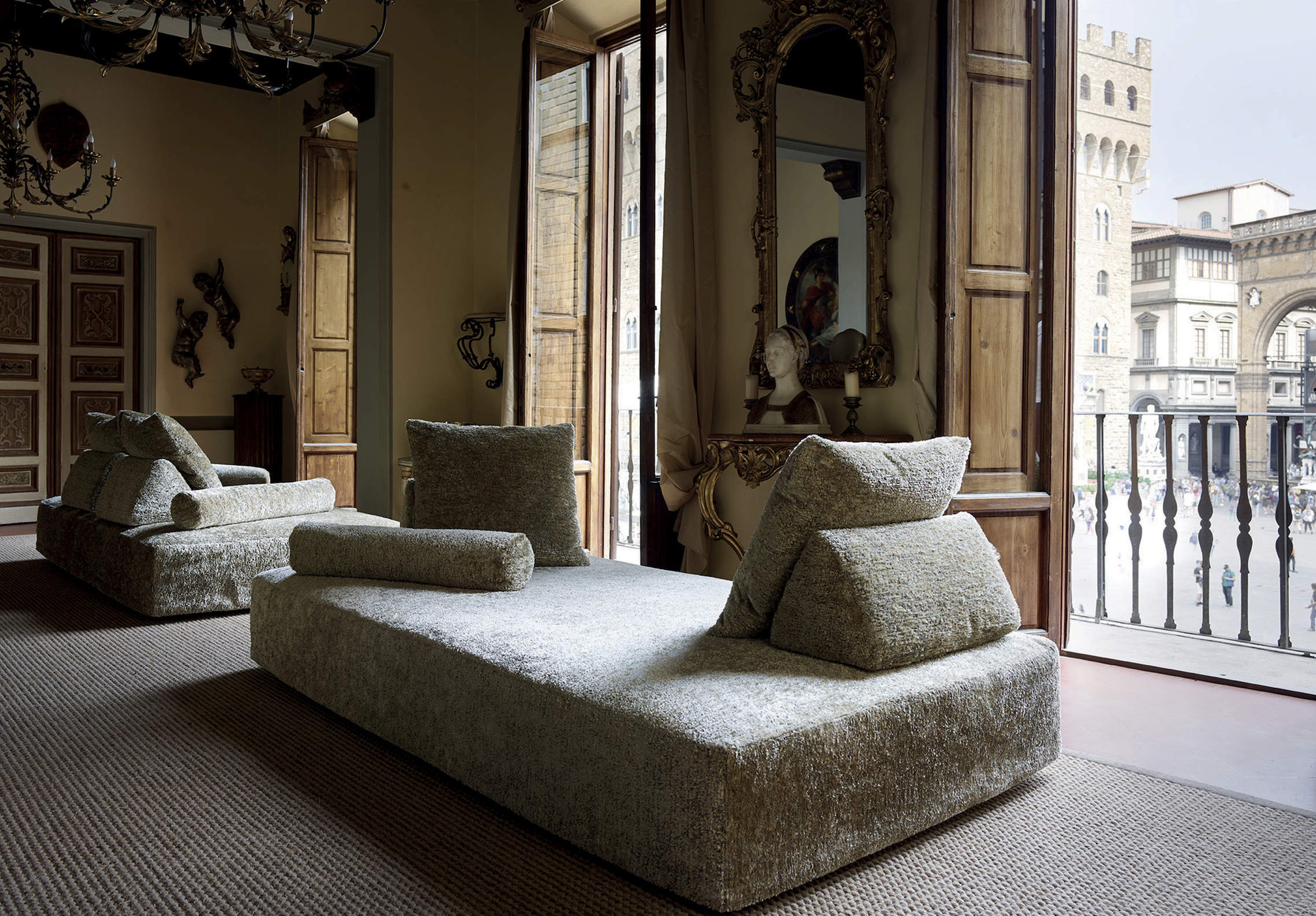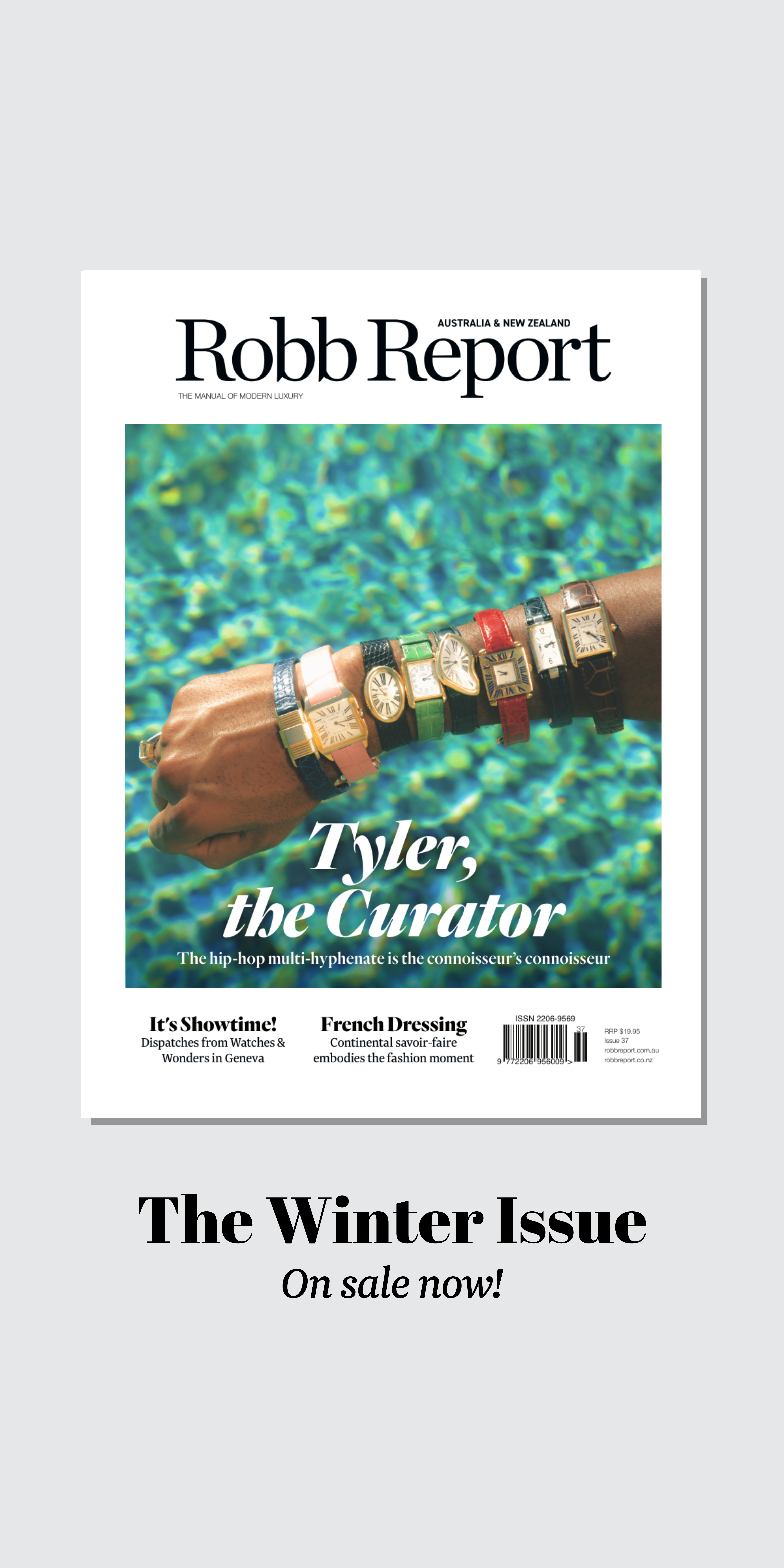
This unlikely destination is Africa’s new safari star
Almost nothing comes easy for travellers in this formerly war-torn country — but it’s always worth the effort in the end.
Related articles
The valley looks like it’s spun from gold. Lush from the season’s rains, the vibrant expanse shimmers in the afternoon sunlight, a secret garden guarded by the majestic Mount Bisoke to the west and tumbling hills to the north. Climbing the emerald peak to the east, though, is the set of unbearably steep stone steps on which I currently find myself standing — and panting. Perhaps it’s the altitude, or all of that unfiltered golden light, that has me gulping for air.
“Every single stone on these steps was carried up by human hands,” says Ingrid Baas, the manager of Rwanda’s new Bisate Lodge (available through Alluring Africa) as she guides me up, up, and up farther still. I nod and give a tight-lipped smile in response — a fatigued gesture that I hope communicates a combination of “wow” and “tell me more.” “Men were carrying hundreds of pounds on their backs up this hill. The physical effort was unbelievable.” I answer with a silent, humble nod and wonder how much farther we have to go.

At last we arrive at the main lodge — and what an arrival it is. The fruits of 9 months of human labour are clear: Bisate is unlike any safari camp I’ve ever seen. The dome-like space bears little resemblance to the traditional tented lodges common throughout sub-Saharan Africa. Gone are the canvas chairs and vintage trunks. In their place are modern low-slung chairs covered in fur throws, sparkling chartreuse chandeliers composed of thousands of tiny bits of glass, and sweeping billowy curves everywhere. One look at the views from the terrace — a panorama over the valley and the mountains and those terraced hills — and I’m breathless all over again.
Indeed, Bisate is worth the effort, both to get there and to build. The six-room lodge is the result of nearly a decade of research and planning by the Botswana-based safari outfitter Wilderness. Set on the edge of Volcanoes National Park — where Dian Fossey famously carried out her research of the region’s primates — the camp is an aesthetic masterpiece as well as a magnum opus of sorts for Wilderness. “I’ve never walked away from a project feeling so rewarded,” says the company’s CEO, Keith Vincent. “Every part of it has blown me away, from the efforts the local population put into making it happen to the sense of pride it has brought to the surrounding villages.” That the hillside camp was constructed almost entirely by human power is nothing short of a miracle.

Spend a bit of time in Rwanda and you’ll find that almost nothing comes easy for travelers here — but it’s always worth the effort in the end. I arrived in the capital of Kigali two days earlier to discover a modern metropolis booming with progress. Hardly the mere pre-safari pit stop I had envisioned, the city is a testament to the strides this country has made in the quarter-century since a tragic genocide tore it apart. The atrocity — a 100-day slaughter that ended with nearly 1 million dead at the hands of their own neighbors, friends, and families — is still clear in the memory of every Rwandan above a certain age. And yet a collective optimism about the country’s future clearly prevails.
“The president has given us a new hope,” says my driver, Emmanuel Gasana, as we zip past the cutting-edge Kigali Convention Centre, an all-glass orb-like structure that was completed in 2016. “He’s making sure everyone gets an education, and creating jobs for people who have never worked before. And he’s bringing investors into the country to create new opportunities and wealth.”

Rwanda is still a work in progress — for instance, last August’s reelection of President Paul Kagame with 99 percent of the vote raised questions of political oppression — but recent improvements are readily apparent. We pass a pristine shopping centre and an ultramodern hotel wrapped in colorful ribbons of metal before turning a corner flanked by billboards showing a pair of shimmering residential towers. A new airport, the dramatic cantilevering Kigali Art & Culture Centre, and Norman Foster’s first-of-its-kind “droneport” (a hub for cargo delivered via drone) are also in the works.
Kagame is leading his country into an unprecedented tourism boom, too. The Virunga Mountains have long held allure for travellers, offering the rare opportunity to see the same endangered mountain gorillas and other primates that Fossey studied during the 1960s and ’70s. But the Rwandan government has a broader ambition, one that will lure travellers beyond the Virungas. “There’s so much more to Rwanda than simply cherry-picking the gorilla-tracking experience,” Vincent says. “The long-term goal is to open up new destinations, too.”
To that end, Wilderness is planning to open its second Rwandan camp in the northeastern Akagera National Park, which offers the country’s only Big Five safari experience. In the southwestern Nyungwe Forest National Park — home to chimpanzees and monkeys — the luxury-resort brand One&Only opened a lodge last year.

Luxury travellers are clearly a focus for Rwanda, particularly in the Virungas, where the government recently doubled the price of gorilla-tracking permits to ensure a more exclusive experience than that of neighboring Uganda. In addition to Wilderness’s Bisate, visitors to the region will soon be able to choose from lodges by both One&Only — which is scheduled to unveil its reinvention of the historic Gorilla’s Nest later this year — and Singita. For now, however, the talk of Rwanda is Wilderness’s rarefied new retreat in the heart of the Virungas.
With Gasana at the wheel, we set out on the 3-hour drive from Kigali. It’s only a matter of minutes before the city streets give way to winding mountain roads, and as we weave past sloping fields lined row after row with Irish potatoes and wide expanses of wispy golden wheat, rural Rwanda comes alive. Gasana, who lost his mother in the genocide, tells me that the mud farmhouses to our right remind him of his youth, when he’d visit his grandmother in the countryside.
Two hours later, Bisate comes into view, its woven structures sprouting from the hillside like giant birds’ nests wedged into a mound of ferns. Baas is waiting to show me up the steep stone steps to my room, which turns out to be a fantastical cross between an enormous woven basket and a geodesic dome. Designed by Garreth Kriel of the South African firm Nicholas Plewman Architects, the thatched villa is a reinterpretation of the old king’s palace of Nyanza, once the seat of the Rwandan monarchy. But this modern version brims with chic details: In the bathroom, the deep-soaking tub looks as if it were carved from slick onyx. Above it, an elegant chandelier is composed of tiny strips of leather. In the bedroom, colourful patterns covering the wingback chairs and pillows are contemporised versions of traditional kitenge fabrics. And the bed is the most comfortable I’ve slept in since arriving in Rwanda.

At over 2,590 metres, I’m naturally a little bit lightheaded, but the views from my private terrace are downright dizzying. I step out into the sun to find a pair of black-and-white rattan chairs that have been positioned in such a way that when I sit down, I find myself quite nearly face to saw-toothed face with Mount Bisoke. The floating effect is utterly magical. You don’t go on safari to spend all of your time in your room, but my, is it tempting.
“Mmmmmm,” Patrick Magirirane growls. “Muhhh-mmmmm.” Our group of eight trekkers is clinging to the side of Mount Karisimbi, catching our breath, and getting a crash course in gorilla-speak from our guide. Of the 20-plus vocalisations used by gorillas, the one Magirirane has just taught us roughly translates to “Hello. We come in peace.”
It is 10:30 am and we’ve been ascending this trail-less incline for more than an hour. The air is getting thinner and thinner — or maybe it’s the careful work of treading through an indecipherable grid of bamboo that has me feeling dazed. Everywhere, mossy reeds shoot this way and that; it’s like wading through a giant game of pick-up sticks. At the front of our group a trio of gorilla trackers slashes at the maze with their machetes, and we inch forward, with nettles latching onto our pant legs and tangles of lianas grabbing at our ankles as if trying to hold us back.
When we reach a muddy depression bridged by a fallen tree trunk, my porter — a sturdy woman named Pauline whom I hired only to carry my backpack filled with cameras and lenses — reaches for my hand. I timidly take it and allow her to hoist me over the impasse. Minutes later she reaches for me again, this time to help me navigate a slippery crevasse. A few minutes after that, I hit my head on a low tree branch. I swallow my pride, reach for Pauline’s hand, and decide not to let go until we reach less hazardous terrain.

Then, suddenly, we’ve arrived. Just beyond the thicket of bamboo ahead, Magirirane tells us, is Pablo’s group, one of the gorilla families Fossey habituated during her 18 years among these mountains. One by one we cross the threshold, emerging from the dark forest into a brilliant sloping meadow. And there, lounging in the midmorning sun like a Bacchus feasting on grapes, is Gicurasi, the group’s massive silverback of 180-plus kilograms, munching on wild celery.
Anyone who has encountered gorillas in the wild will emphatically remind you that we share 98 percent of our DNA with the black-furred beasts. This fact carries significantly more weight when you’re actually standing in front of a silverback. Gicurasi’s nimble fingers — and his fingernails — look so human, I can’t help but glance down at my own for the sake of comparison. When he finishes his snack, he rolls over onto his stomach and rests his chin in his hands, as if posing for a pin-up calendar. And when a rowdy adolescent tumbles past, plucking a shoot of celery for himself, Gicurasi slowly lumbers away, every bit the grumpy dad in search of just one moment of peace.
For their part, the gorillas meet our awe with impassive disinterest. As we navigate the meadow around them, gracelessly tripping over the knotted vines that cover the ground, they go about their business utterly unmoved. We coo over a 3-week-old baby, laughing at the wild mess of hair atop his head. We chuckle when a blackback — the group’s second eldest male — groggily stumbles out of the brush like a hungover frat boy. And we gasp when a rowdy juvenile cartwheels into the middle of the clearing, nearly knocking over one of his human intruders. Meanwhile, they doze in and out of sleep, pick gnats off each other, and occasionally glance in our direction and let out a halfhearted mmmmm.
All too soon, our time with Pablo’s group comes to an end, and Magirirane leads us back into the forest where Pauline waits with my backpack. The long trek back down Karisimbi is still ahead. The stabbing nettles and the trenches of mud and the mess of bamboo are all waiting to be navigated once again. But however arduous the journey home, the effort will be worth it.
Subscribe to the Newsletter
Recommended for you
For Peat’s Sake: Scotland’s ‘Whisky Island’
There’s a reason Islay produces some of the world’s most characterful whisky. And it’s hidden in the undergrowth.
By Nick Ryan
July 22, 2024
How Paris’s Dining, Hotel and Art Scene Got Their Groove Back — Just in Time for the Olympics
The French capital’s cultural life was already on the upswing. Mix in a major global sporting event, and it’s now ready to go toe to toe with any city in the world.
By Vivian Song
July 9, 2024
You may also like.
By Josh Bozin
24/07/2024
You may also like.
5 Lounge Chairs That Add Chic Seating to Your Space
Daybeds, the most relaxed of seating solutions, offer a surprising amount of utility.
Chaise longue, daybed, recamier, duchesse brisée—elongated furniture designed for relaxing has a roster of fancy names. While the French royal court of Louis XIV brought such pieces to prominence in fashionable European homes, the general idea has been around far longer: The Egyptian pharaohs were big fans, while daybeds from China’s Ming dynasty spurred all those Hollywood Regency fretwork pieces that still populate Palm Beach living rooms. Even Mies van der Rohe, one of design’s modernist icons, got into the lounge game with his Barcelona couch, a study of line and form that holds up today.
But don’t get caught up in who invented them, or what to call them. Instead, consider their versatility: Backless models are ideal in front of large expanses of glass (imagine lazing on one with an ocean view) or at the foot of a bed, while more structured pieces can transform any corner into a cozy reading nook. Daybeds may be inextricably linked to relaxation, but from a design perspective, they put in serious work.
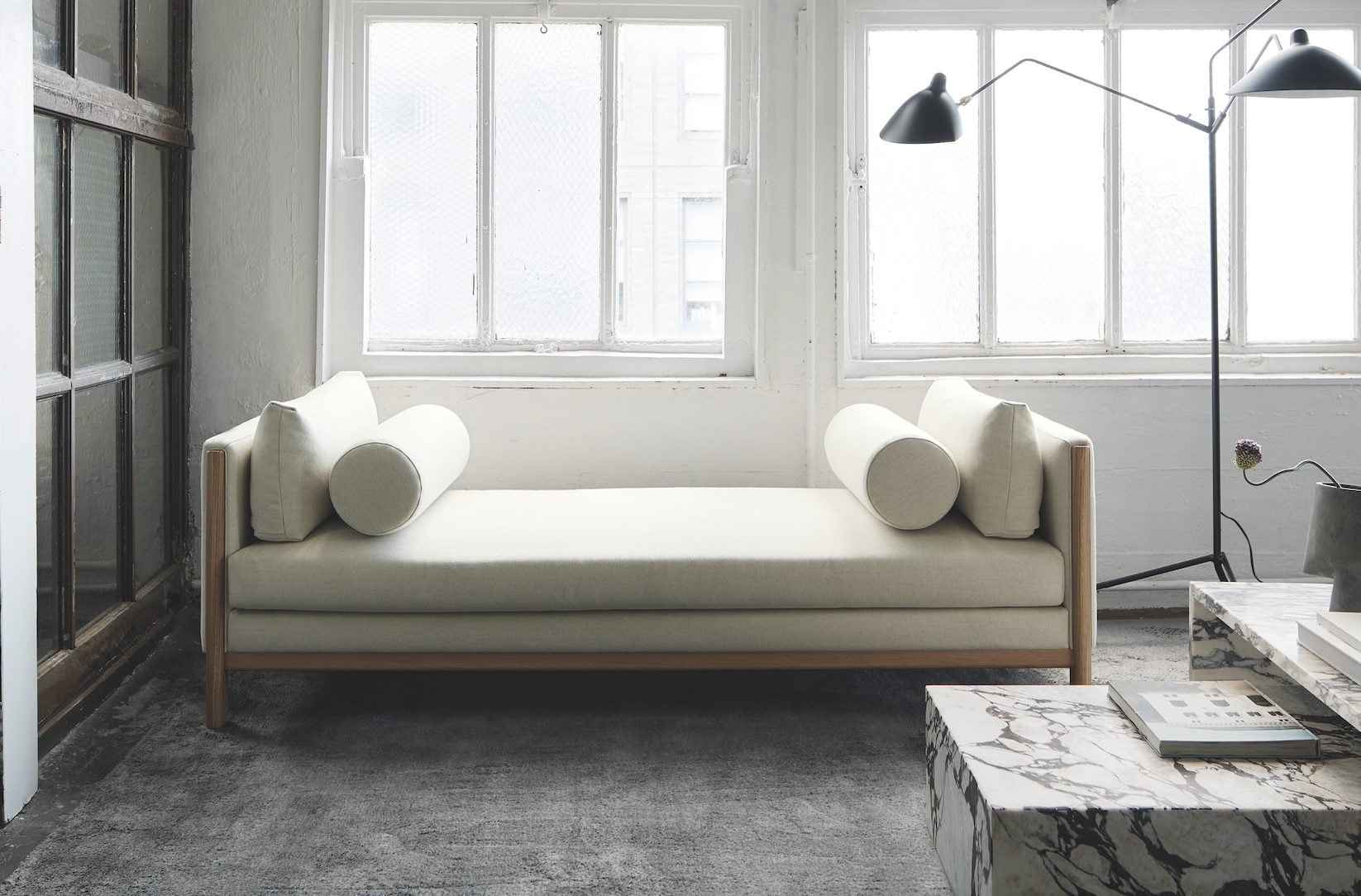
Emmy, Egg Collective
In designing the Emmy chaise, the Egg Collective trio of Stephanie Beamer, Crystal Ellis and Hillary Petrie, who met as students at Washington University in St. Louis, aimed for versatility. Indeed, the tailored chaise looks equally at home in a glass skyscraper as it does in a turn-of-the-century town house. Combining the elegance of a smooth, solid oak or walnut frame with the comfort of bolsters and cushioned upholstery or leather, it works just as well against a wall or at the heart of a room. From around $7,015; Eggcollective.com
 Plum, Michael Robbins
Plum, Michael Robbins
Woodworker Michael Robbins is the quintessential artisan from New York State’s Hudson Valley in that both his materials and methods pay homage to the area. In fact, he describes his style as “honest, playful, elegant and reflective of the aesthetic of the Hudson Valley surroundings”. Robbins crafts his furniture by hand but allows the wood he uses to help guide the look of a piece. (The studio offers eight standard finishes.) The Plum daybed, brought to life at Robbins’s workshop, exhibits his signature modern rusticity injected with a hint of whimsy thanks to the simplicity of its geometric forms. Around $4,275; MichaelRobbins.com

Kimani, Reda Amalou Design
French architect and designer Reda Amalou acknowledges the challenge of creating standout seating given the number of iconic 20th-century examples already in existence. Still, he persists—and prevails. The Kimani, a bent slash of a daybed in a limited edition of eight pieces, makes a forceful statement. Its leather cushion features a rolled headrest and rhythmic channel stitching reminiscent of that found on the seats of ’70s cars; visually, these elements anchor the slender silhouette atop a patinated bronze base with a sure-handed single line. The result: a seamless contour for the body. Around $33,530; RedaAmalou
Dune, Workshop/APD
From a firm known for crafting subtle but luxurious architecture and interiors, Workshop/APD’s debut furniture collection is on point. Among its offerings is the leather-wrapped Dune daybed. With classical and Art Deco influences, its cylindrical bolsters are a tactile celebration, and the peek of the curved satin-brass base makes for a sensual surprise. Associate principal Andrew Kline notes that the daybed adeptly bridges two seating areas in a roomy living space or can sit, bench-style, at the foot of a bed. From $13,040; Workshop/ APD
Sherazade, Edra
Designed by Francesco Binfaré, this sculptural, minimalist daybed—inspired by the rugs used by Eastern civilizations—allows for complete relaxation. Strength combined with comfort is the name of the game here. The Sherazade’s structure is made from light but sturdy honeycomb wood, while next-gen Gellyfoam and synthetic wadding aid repose. True to Edra’s amorphous design codes, it can switch configurations depending on the user’s mood or needs; for example, the accompanying extra pillows—one rectangular and one cylinder shaped— interchange to become armrests or backrests. From $32,900; Edra
You may also like.
By Josh Bozin
24/07/2024
22/07/2024
Watches & Wonders 2024 Showcase: Hermès
We head to Geneva for the Watches & Wonders exhibition; a week-long horological blockbuster featuring the hottest new drops, and no shortage of hype.
With Watches & Wonders 2024 well and truly behind us, we review some of the novelties Hermès presented at this year’s event.
—
HERMÈS

Moving away from the block colours and sporty aesthetic that has defined Hermès watches in recent years, the biggest news from the French luxury goods company at Watches & Wonders came with the unveiling of its newest collection, the Hermès Cut.
It flaunts a round bezel, but the case middle is nearer to a tonneau shape—a relatively simple design that, despite attracting flak from some watch aficionados, works. While marketed as a “women’s watch”, the Cut has universal appeal thanks to its elegant package and proportions. It moves away from the Maison’s penchant for a style-first product; it’s a watch that tells the time, not a fashion accessory with the ability to tell the time.
Hermès gets the proportions just right thanks to a satin-brushed and polished 36 mm case, PVD-treated Arabic numerals, and clean-cut edges that further accentuate its character. One of the key design elements is the positioning of the crown, boldly sitting at half-past one and embellished with a lacquered or engraved “H”, clearly stamping its originality. The watch is powered by a Hermès Manufacture movement H1912, revealed through its sapphire crystal caseback. In addition to its seamlessly integrated and easy-wearing metal bracelet, the Cut also comes with the option for a range of coloured rubber straps. Together with its clever interchangeable system, it’s a cinch to swap out its look.
It will be interesting to see how the Hermès Cut fares in coming months, particularly as it tries to establish its own identity separate from the more aggressive, but widely popular, Ho8 collection. Either way, the company is now a serious part of the dialogue around the concept of time.
—
Read more about this year’s Watches & Wonders exhibition at robbreport.com.au
You may also like.
22/07/2024
Living La Vida Lagerfeld
The world remembers him for fashion. But as a new tome reveals, the iconoclastic designer is defined as much by extravagant, often fantastical, homes as he is clothes.
“Lives, like novels, are made up of chapters”, the world-renowned bibliophile, Karl Lagerfeld, once observed.
Were a psychological-style novel ever to be written about Karl Lagerfeld’s life, it would no doubt give less narrative weight to the story of his reinvigoration of staid fashion houses like Chloe, Fendi and Chanel than to the underpinning leitmotif of the designer’s constant reinvention of himself.
In a lifetime spanning two centuries, Lagerfeld made and dropped an ever-changing parade of close friends, muses, collaborators and ambiguous lovers, as easily as he changed his clothes, his furniture… even his body. Each chapter of this book would be set against the backdrop of one of his series of apartments, houses and villas, whose often wildly divergent but always ultra-luxurious décor reflected the ever-evolving personas of this compulsively public but ultimately enigmatic man.
With the publication of Karl Lagerfeld: A Life in Houses these wildly disparate but always exquisite interiors are presented for the first time together as a chronological body of work. The book indeed serves as a kind of visual novel, documenting the domestic dreamscapes in which the iconic designer played out his many lives, while also making a strong case that Lagerfeld’s impact on contemporary interior design is just as important, if not more so, than his influence on fashion.
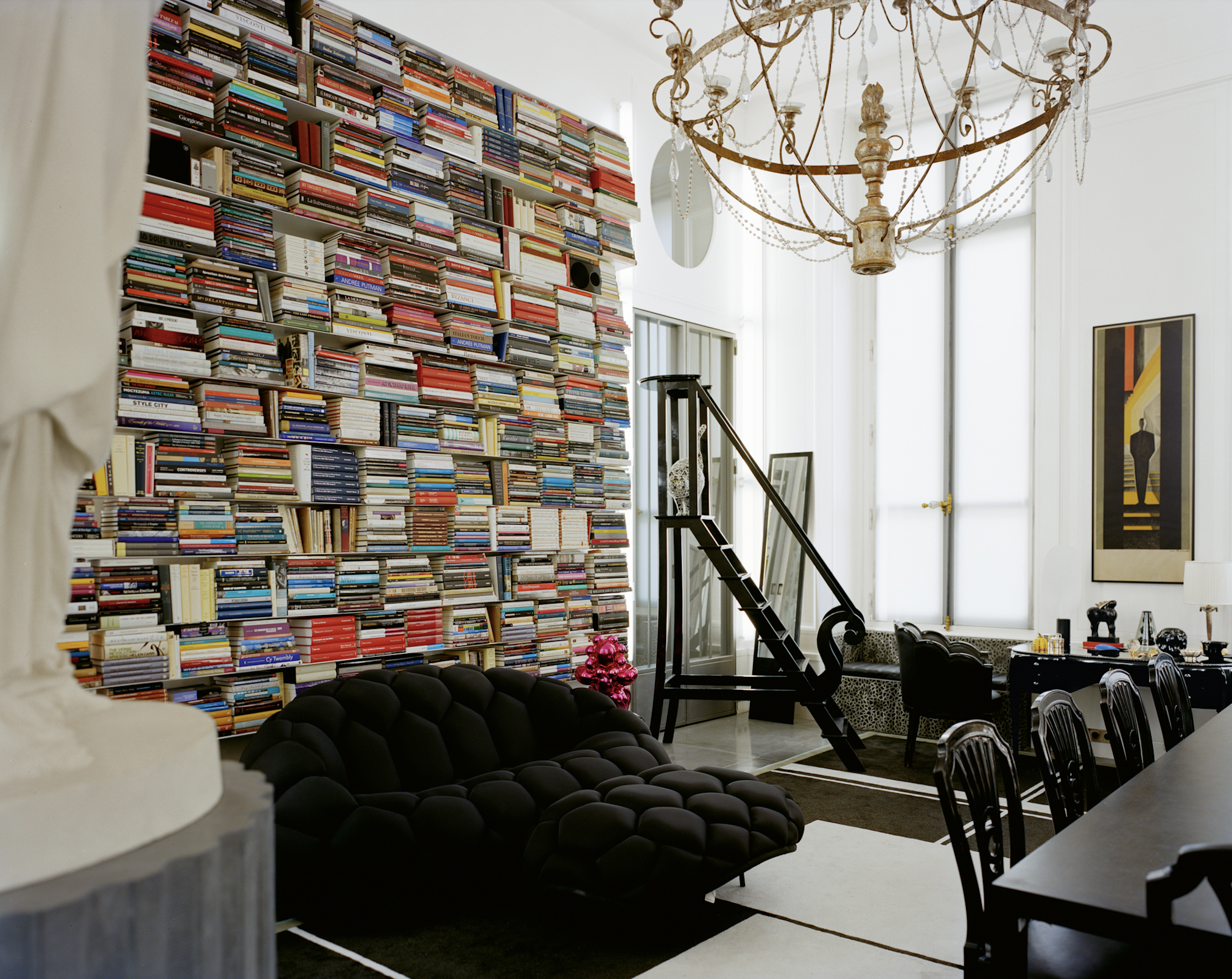
In fact, when the first Lagerfeld interior was featured in a 1968 spread for L’OEil magazine, the editorial describes him merely as a “stylist”. The photographs of the apartment in an 18th-century mansion on rue de Université, show walls lined with plum-coloured rice paper, or lacquered deepest chocolate brown in sharp contrast to crisp, white low ceilings that accentuated the horizontality that was fashionable among the extremely fashionable at the time. Yet amid this setting of aggressively au courant modernism, the anachronistic pops of Art Nouveau and Art Deco objects foreshadow the young Karl’s innate gift for creating strikingly original environments whose harmony is achieved through the deft interplay of contrasting styles and contexts.
Lagerfeld learned early on that presenting himself in a succession of gem-like domestic settings was good for crafting his image. But Lagerfeld’s houses not only provided him with publicity, they also gave him an excuse to indulge in his greatest passion. Shopping!
By 1973, Lagerfeld was living in a new apartment at Place Saint–Sulpice where his acquisition of important Art Deco treasures continued unabated. Now a bearded and muscular disco dandy, he could most often be found in the louche company of the models, starlets and assorted hedonistic beauties that gathered around the flamboyant fashion illustrator Antonio Lopez. Lagerfeld was also in the throes of a hopeless love affair with Jacques de Bascher whose favours he reluctantly shared with his nemesis Yves Saint Laurent.
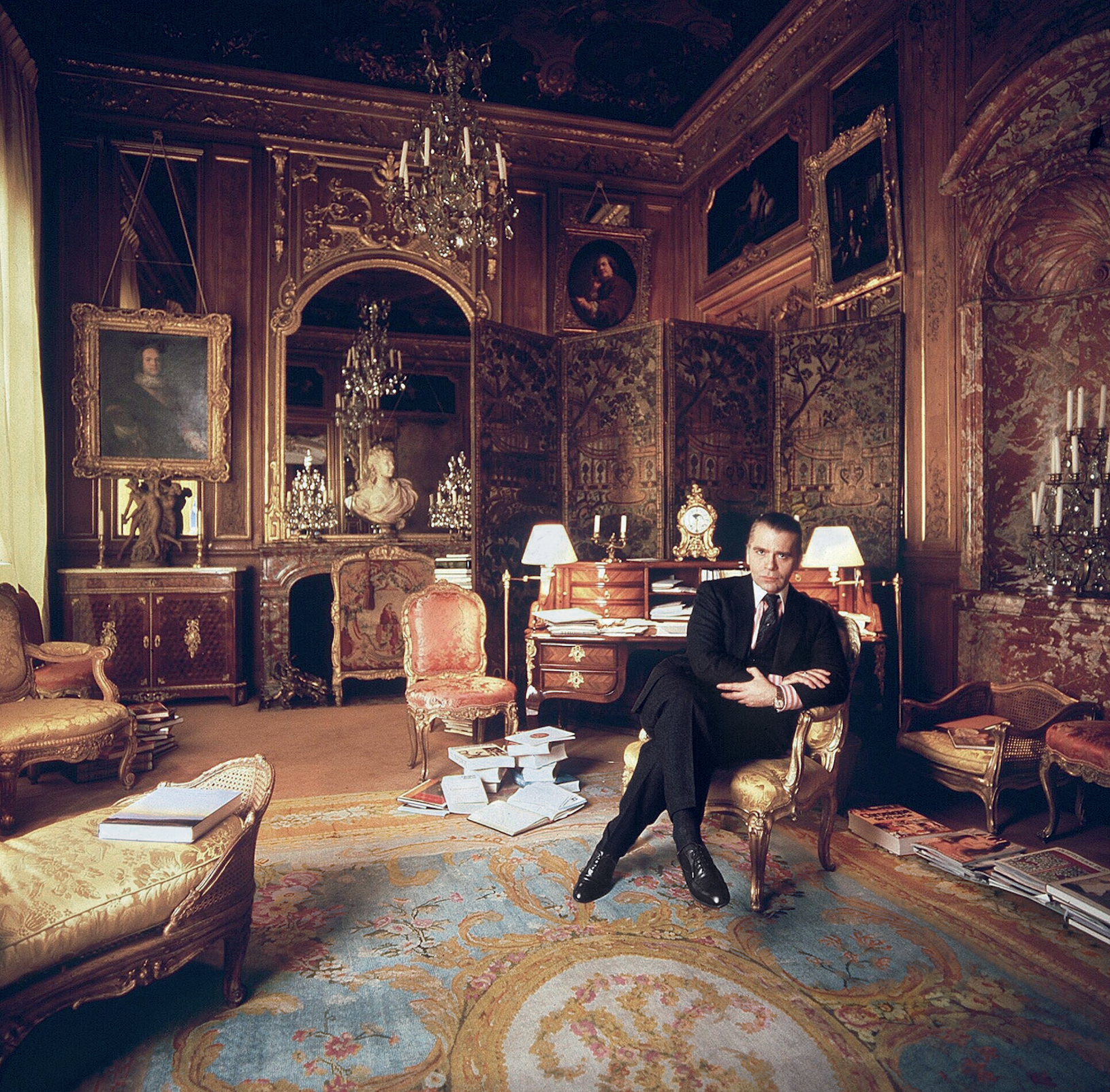
He painted the rooms milky white and lined them with specially commissioned carpets—the tawny patterned striations of which invoked musky wild animal pelts. These lent a stark relief to the sleek, machine-age chrome lines of his Deco furnishings. To contemporary eyes it remains a strikingly original arrangement that subtly conveys the tensions at play in Lagerfeld’s own life: the cocaine fuelled orgies of his lover and friends, hosted in the pristine home of a man who claimed that “a bed is for one person”.
In 1975, a painful falling out with his beloved Jacques, who was descending into the abyss of addiction, saw almost his entire collection of peerless Art Deco furniture, paintings and objects put under the auctioneer’s hammer. This was the first of many auction sales, as he habitually shed the contents of his houses along with whatever incarnation of himself had lived there. Lagerfeld was dispassionate about parting with these precious goods. “It’s collecting that’s fun, not owning,” he said. And the reality for a collector on such a Renaissance scale, is that to continue buying, Lagerfeld had to sell.
Of all his residences, it was the 1977 purchase of Hôtel Pozzo di Borgo, a grand and beautifully preserved 18th-century house, that would finally allow him to fulfill his childhood fantasies of life in the court of Madame de Pompadour. And it was in this aura of Rococó splendour that the fashion designer began to affect, along with his tailored three-piece suits, a courtier’s ponytailed and powdered coif and a coquettish antique fan: marking the beginning of his transformation into a living, breathing global brand that even those with little interest in fashion would immediately recognise.
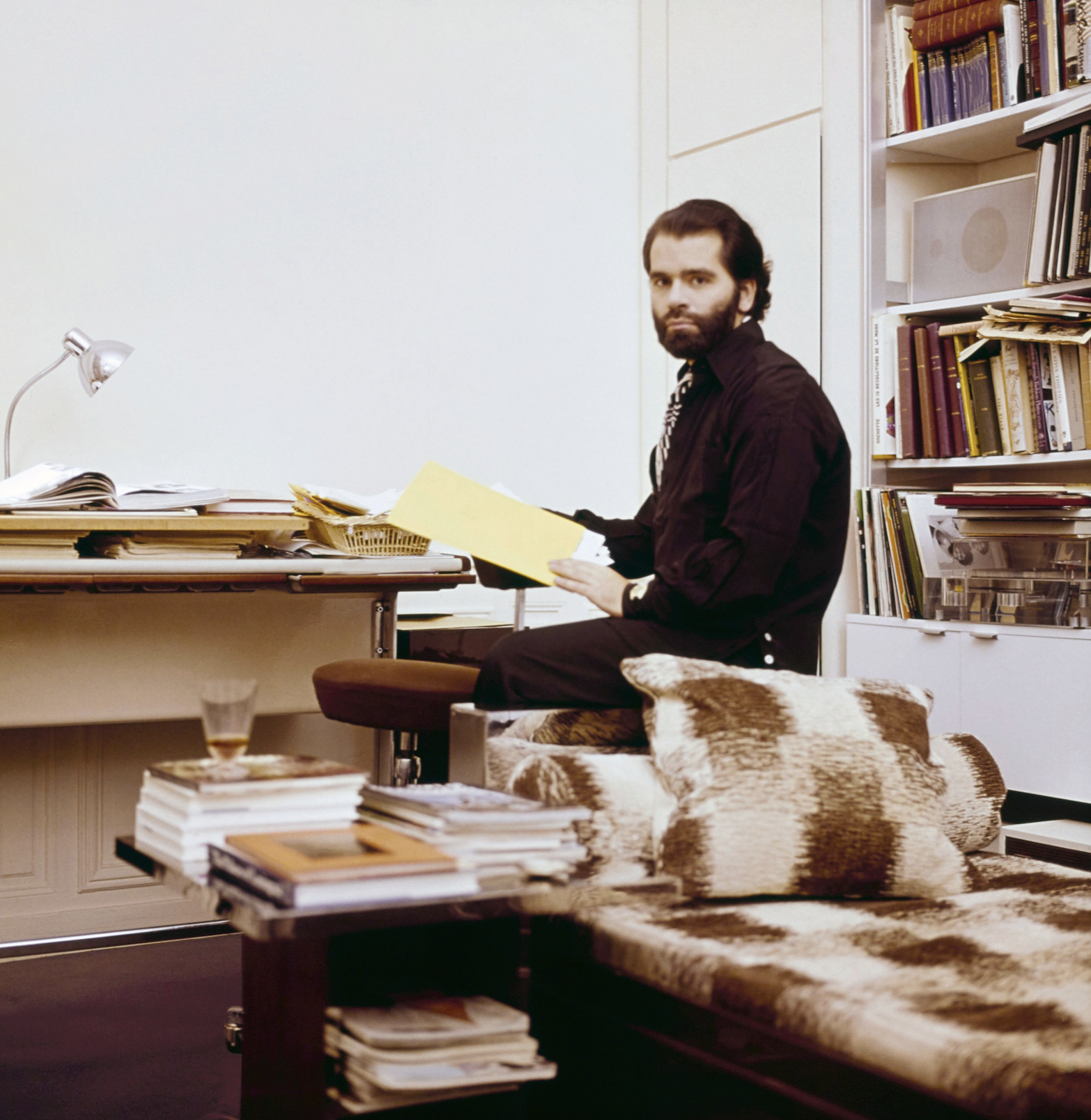
Lagerfeld’s increasing fame and financial success allowed him to indulge in an unprecedented spending frenzy, competing with deep-pocketed institutions like the Louvre to acquire the finest, most pedigreed pearls of the era—voluptuously carved and gilded bergères; ormolu chests; and fleshy, pastel-tinged Fragonard idylls—to adorn his urban palace. His one-time friend André Leon Talley described him in a contemporary article as suffering from “Versailles complex”.
However, in mid-1981, and in response to the election of left-wing president, François Mitterrand, Lagerfeld, with the assistance of his close friend Princess Caroline, became a resident of the tax haven of Monaco. He purchased two apartments on the 21st floor of Le Roccabella, a luxury residential block designed by Gio Ponti. One, in which he kept Jacques de Bascher, with whom he was now reconciled, was decorated in the strict, monochromatic Viennese Secessionist style that had long underpinned his aesthetic vocabulary; the other space, though, was something else entirely, cementing his notoriety as an iconoclastic tastemaker.

Lagerfeld had recently discovered the radically quirky designs of the Memphis Group led by Ettore Sottsass, and bought the collective’s entire first collection and had it shipped to Monaco. In a space with no right angles, these chaotically colourful, geometrically askew pieces—centred on Masanori Umeda’s famous boxing ring—gave visitors the disorientating sensation of having entered a corporeal comic strip. By 1991, the novelty of this jarring postmodern playhouse had inevitably worn thin and once again he sent it all to auction, later telling a journalist that “after a few years it was like living in an old Courrèges. Ha!”

In 1989, de Bascher died of an AIDS-related illness, and while Lagerfeld’s career continued to flourish, emotionally the famously stoic designer was struggling. In 2000, a somewhat corpulent Lagerfeld officially ended his “let them eat cake” years at the Hôtel Pozzo di Borgo, selling its sumptuous antique fittings in a massive headline auction that stretched over three days. As always there were other houses, but now with his longtime companion dead, and his celebrity metastasising making him a target for the paparazzi, he began to look less for exhibition spaces and more for private sanctuaries where he could pursue his endless, often lonely, work.
His next significant house was Villa Jako, named for his lost companion and built in the 1920s in a nouveau riche area of Hamburg close to where he grew up. Lagerfeld shot the advertising campaign for Lagerfeld Jako there—a fragrance created in memorial to de Bascher. The house featured a collection of mainly Scandinavian antiques, marking the aesthetic cusp between Art Nouveau and Art Deco. One of its rooms Lagerfeld decorated based on his remembrances of his childhood nursery. Here, he locked himself away to work—tellingly—on a series of illustrations for the fairy tale, The Emperor’s New Clothes. Villa Jako was a house of deep nostalgia and mourning.
But there were more acts—and more houses—to come in Lagerfeld’s life yet. In November 2000, upon seeing the attenuated tailoring of Hedi Slimane, then head of menswear at Christian Dior, the 135 kg Lagerfeld embarked on a strict dietary regime. Over the next 13 months, he melted into a shadow of his former self. It is this incarnation of Lagerfeld—high white starched collars; Slimane’s skintight suits, and fingerless leather gloves revealing hands bedecked with heavy silver rings—that is immediately recognisable some five years after his death.
The 200-year-old apartment in Quái Voltaire, Paris, was purchased in 2006, and after years of slumber Lagerfeld—a newly awakened Hip Van Winkle—was ready to remake it into his last modernist masterpiece. He designed a unique daylight simulation system that meant the monochromatic space was completely without shadows—and without memory. The walls were frosted and smoked glass, the floors concrete and silicone; and any hint of texture was banned with only shiny, sleek pieces by Marc Newson, Martin Szekely and the Bouroullec Brothers permitted. Few guests were allowed into this monastic environment where Lagerfeld worked, drank endless cans of Diet Coke and communed with Choupette, his beloved Birman cat, and parts of his collection of 300,000 books—one of the largest private collections in the world.

Lagerfeld died in 2019, and the process of dispersing his worldly goods is still ongoing. The Quái Voltaire apartment was sold this year for US$10.8 million (around $16.3 million). Now only the rue de Saint-Peres property remains within the Lagerfeld trust. Purchased after Quái Voltaire to further accommodate more of his books—35,000 were displayed in his studio alone, always stacked horizontally so he could read the titles without straining his neck—and as a place for food preparation as he loathed his primary living space having any trace of cooking smells. Today, the rue de Saint-Peres residence is open to the public as an arts performance space and most fittingly, a library.
You may also like.
By Josh Bozin
24/07/2024
Watch This Space: Mike Nouveau
Meet the game-changing horological influencers blazing a trail across social media—and doing things their own way.
In the thriving world of luxury watches, few people own a space that offers unfiltered digital amplification. And that’s precisely what makes the likes of Brynn Wallner, Teddy Baldassarre, Mike Nouveau and Justin Hast so compelling.
These thought-provoking digital crusaders are now paving the way for the story of watches to be told, and shown, in a new light. Speaking to thousands of followers on the daily—mainly via TikTok, Instagram and YouTube—these progressive commentators represent the new guard of watch pundits. And they’re swaying the opinions, and dollars, of the up-and-coming generations who now represent the target consumer of this booming sector.
—
MIKE NOUVEAU
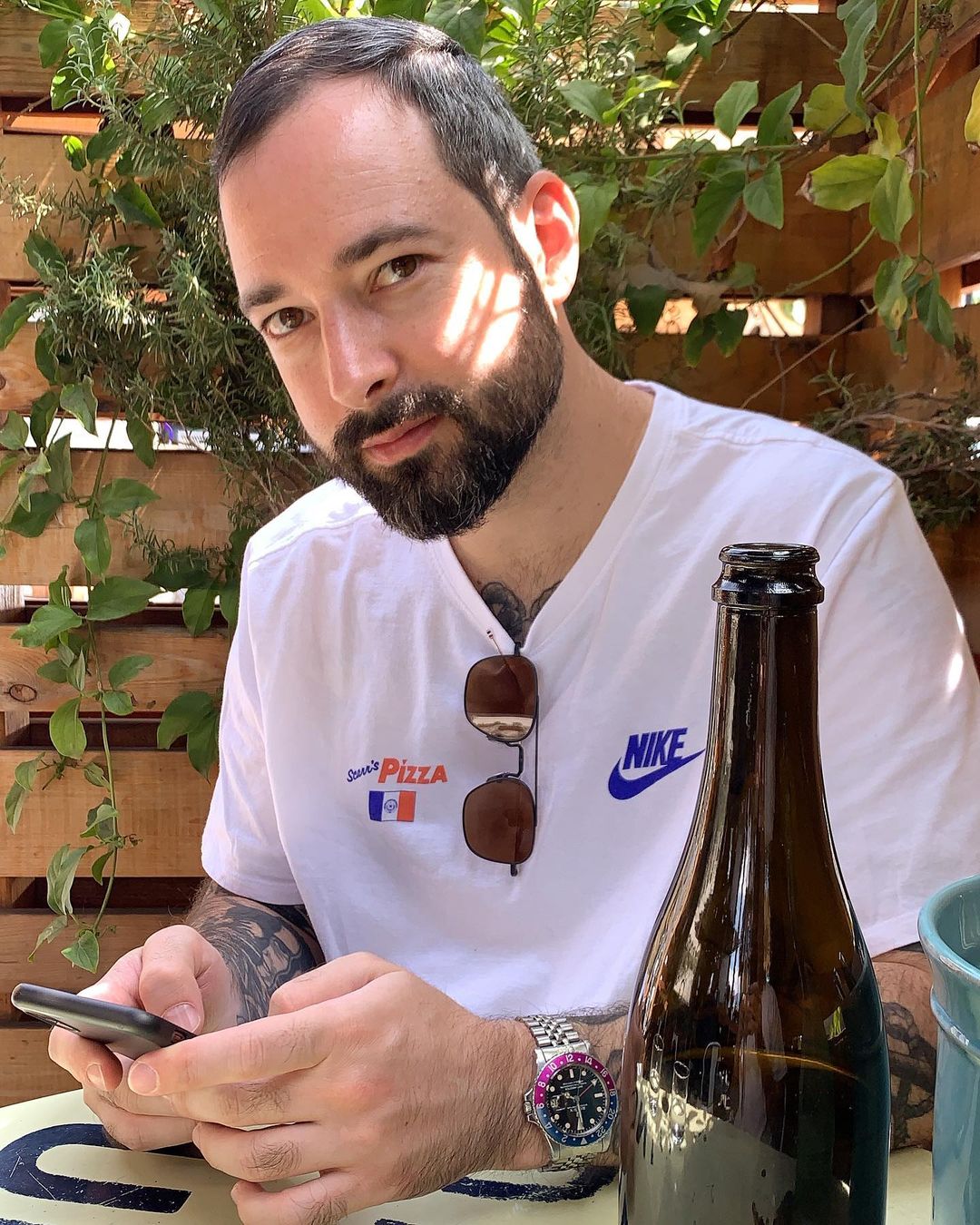
Can we please see what’s on the wrist? That’s the question that catapulted Mike Nouveau into watch stardom, thanks to his penchant for highlighting incredibly rare timepieces across his TikTok account of more than 400,000 followers. When viewing Nouveau’s attention-grabbing video clips—usually shot in a New York City neighbourhood—it’s not uncommon to find him wrist-rolling some of the world’s rarest timepieces, like the million-dollar Cartier Cheich (a clip he posted in May).
But how did someone without any previous watch experience come to amass such a cult following, and in the process gain access to some of the world’s most coveted timepieces? Nouveau admits had been a collector for many years, but moved didn’t move into horology full-time until 2020, when he swapped his DJing career for one as a vintage watch specialist.
“I probably researched for a year before I even bought my first watch,” says Nouveau, alluding to his Rolex GMT Master “Pepsi” ref. 1675 from 1967, a lionised timepiece in the vintage cosmos. “I would see deals arise that I knew were very good, but they weren’t necessarily watches that I wanted to buy myself. I eventually started buying and selling, flipping just for fun because I knew how to spot a good deal.”
Nouveau claims that before launching his TikTok account in the wake of Covid-19, no one in the watch community knew he existed. “There really wasn’t much watch content, if any, on TikTok before I started posting, especially talking about vintage watches. There’s still not that many voices for vintage watches, period,” says Nouveau. “It just so happens that my audience probably skews younger, and I’d say there are just as many young people interested in vintage watches as there are in modern watches.”
View this post on Instagram
Nouveau recently posted a video to his TikTok account revealing that the average price of a watch purchased by Gen Z is now almost US$11,000 (around $16,500), with 41 percent of them coming into possession of a luxury watch in the past 12 months.
“Do as much independent research as you can [when buying],” he advises. “The more you do, the more informed you are and the less likely you are to make a mistake. And don’t bring modern watch expectations to the vintage world because it’s very different. People say, ‘buy the dealer’, but I don’t do that. I trust myself and myself only.”
—
Read more about the influencers shaking up horology here with Justin Hast, Brynn Wallner and Teddy Baldassare.
You may also like.
By Josh Bozin
24/07/2024
This Pristine 1960 Ferrari 250 Spider Could Fetch $24 Million at Auction
The car wears the same colours and has the same engine it left the factory with.
Some Ferraris are just a little bit more important than others.
Take, for example, the 1960 250 GT SWB California that RM Sotheby’s is auctioning off during this year’s Monterey Car Week. Any example of the open-top beauty would attract interest, but this one just so happens to be the first one that was built.
The 250 is one of the most legendary series of cars in Ferrari history. Between 1952 and 1964, the company released 21 different 250 models—seven for racetracks, 14 for public roads—of which the “Cali Spider” might be the most well regarded, thanks to its potent V-12 and a Pininfarina-penned design that is one of the most beautiful bodies to grace an automobile. The roadster, which was specifically built for the U.S., made its debut in 1957 as a long-wheel-base model (LWB), but it wasn’t until the SWB model debut in 1960 that it became clear how special it was. This example isn’t just the first to roll off the line. It’s the actual car that was used to introduce the world to the model at the 1960 Geneva Motor Show.

Just 56 examples of the 250 GT SWB California Spider would be built by Scaglietti during the three years it was in production. The first of those, chassis 1795 GT, is finished in a glossy coat of Grigio. The two-door had a red leather interior at Geneva but was returned to the factory and re-outfitted with black leather upholstery before being delivered to its original owner, British race car driver John Gordon Bennet. Six-and-a-half decades later the car looks identical to how it did when it left the factory the second time.
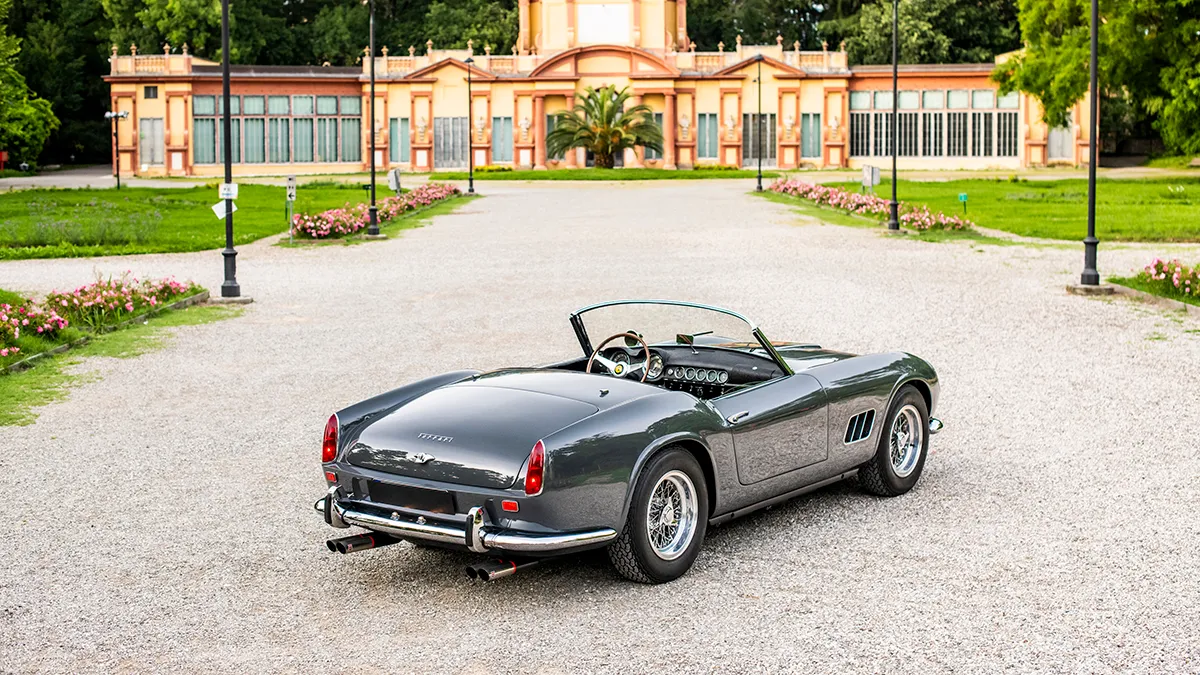
In addition to its original bodywork, the chassis 1795 GT features its original engine, gearbox, and rear axle. That mill is the competition-spec Tipo 168, a 3.0-litre V-12 that makes 196.1 kW. That may not sound like much by today’s standards, but, when you consider that the 250 GT SWB California Spider tips the scales around 952 kilograms, it’s more than enough.
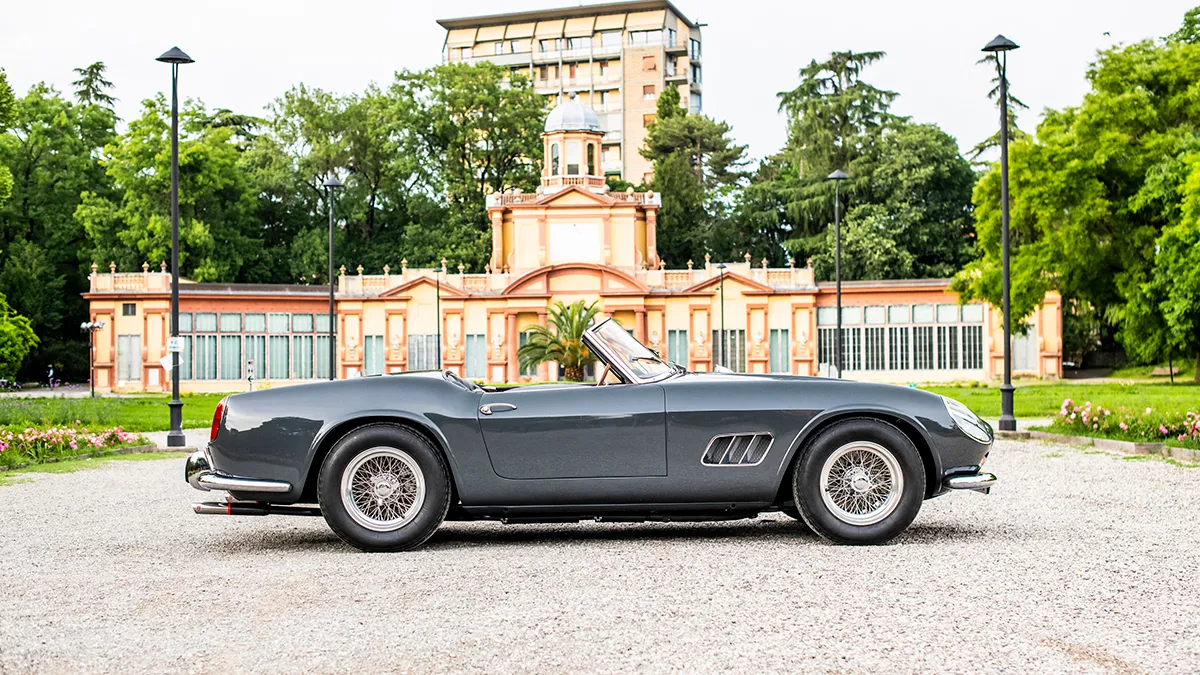
The first 250 GT SWB California Spider is scheduled to go up for bid during RM Sotheby’s annual Monterey Car Week auction, which runs from Thursday, August 15, to Saturday, August 17. Unsurprisingly, the house has quite high hopes for the car. The car carries an estimate of between $24 million and $26 million, which could make it one of the most expensive cars ever sold at auction.
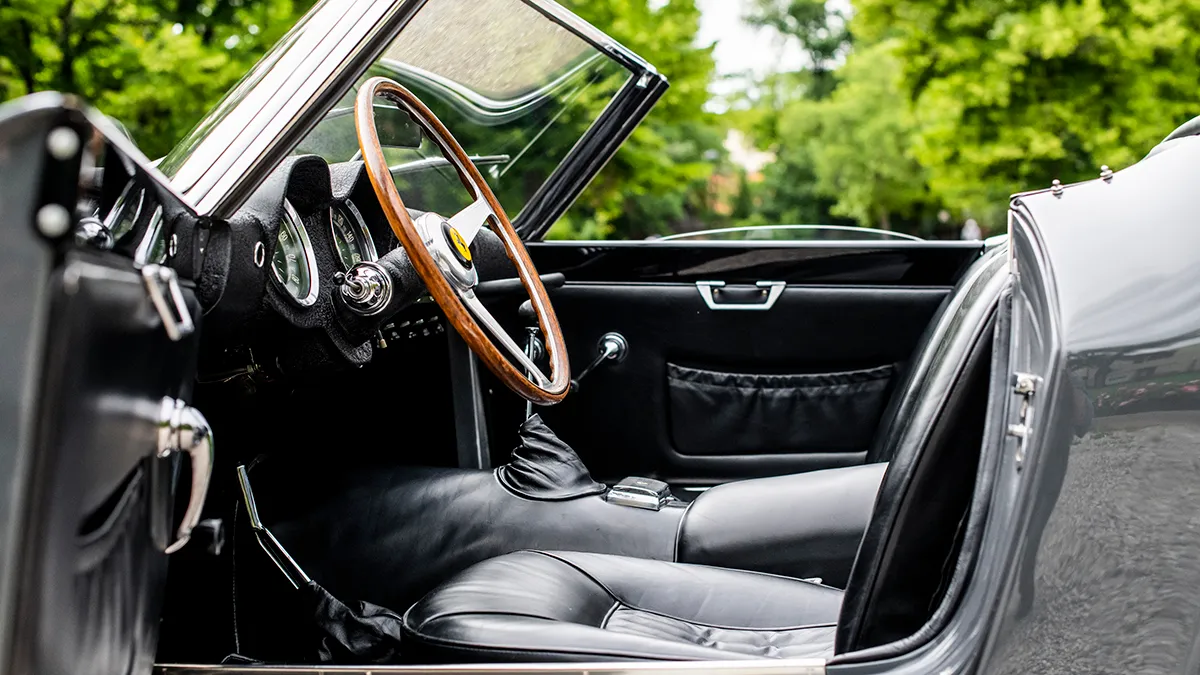
You may also like.
By Josh Bozin
24/07/2024






